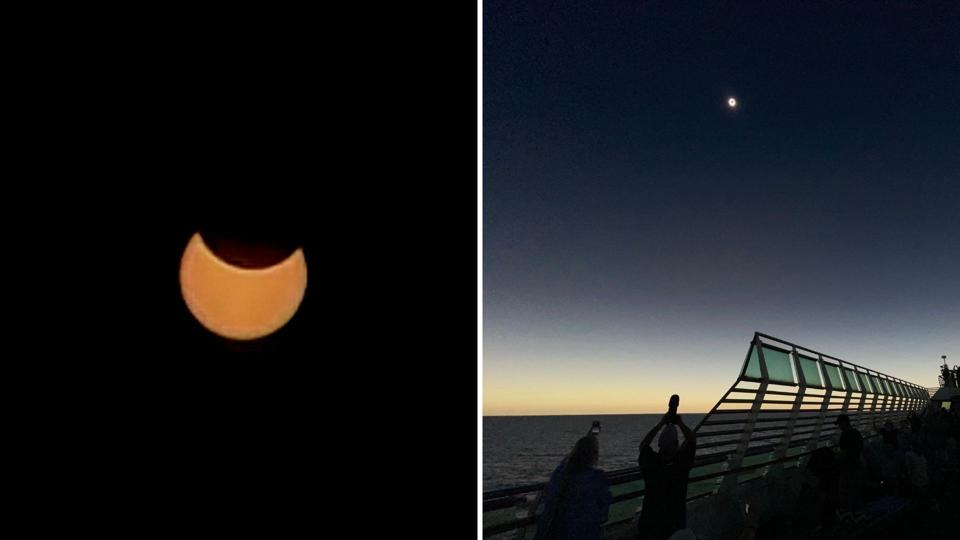How do I take pictures of the eclipse with my phone? You can use your smartphone to take a photo of the eclipse—partial or total—on April 8, but you need to know precisely what you’re doing to get anything approaching impressive.
I took both of these shots last year during solar eclipses—one during October 14’s annular solar eclipse in New Mexico and the other during April 20’s total solar eclipse in Australia.
Many people have long aspired to photograph a total solar eclipse, but even those who have never considered it before can’t resist trying to take some kind of photo when they see one.
The trouble is, holding a smartphone up and simply taking a photo of the sun while it’s being eclipsed will result in something wholly unusable and unimpressive.
It’s straightforward to do with a bit of preparation, though exactly where you are for April 8’s total solar eclipse in North America will make a huge difference to what you can see and photograph.
Smartphone Eclipse Photo #1: Partial Phases
Wherever you are on April 8, most of the 2.5-hour event will be partial phases, when the moon is blocking part of the sun. During this time, you must only look at the eclipse using solar eclipse glasses, which you may still be able to buy online or get for free in your community.
You should also put eclipse glasses or a solar viewer card over a smartphone” camera lens. A nice alternative to that is to use a special, small solar filter for smartphones made by Solar Snap or VisiSolar. The former also comes with a free app on Google Play and Apple iOS that makes it easy to zoom, adjust exposure and focus—regardless of whether you purchase the Solar Snap filters.
Note: When buying solar filters of any kind—including solar eclipse glasses—make sure the company or brand is on the American Astronomical Society’s list of Suppliers of Safe Solar Filters and viewers that comply with the ISO 12312-2 international safety standard.
Smartphone Eclipse Photo #2: Wide-Angle Totality
If you’re going to be inside the path of totality, you get to take the bonus shot of a totally eclipsed sun—but don’t make the mistake of zooming in on the eclipse itself. All you’ll get is a noisy, nasty image.
Instead, go super-wide-angle, using focus-lock on your smartphone to capture a memorable image. First, switch off your flash. When the light level drops just before totality, focus on something in the middle distance, perform a long press to lock the focus, and then move the brightness slider down slightly. Get a friend or loved one in silhouette in the half-light of totality, with the eclipsed sun above them. Burst mode helps.
Shoot In Raw
For both photos, try to collect as much data as possible. “Download a third-party app like Halide, Yamera, or Camera+ 2 and toggle on the raw mode,” says Carl Heilman, a photographer based in the Adirondacks, New York, who teaches eclipse photography workshops. “Be sure your phone has enough card space to record raw files and remember that they need to be edited and post-processed.”
Above all, remember to enjoy the eclipse, not just photograph it.

